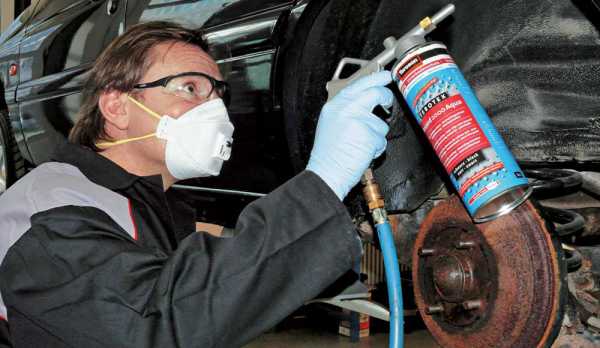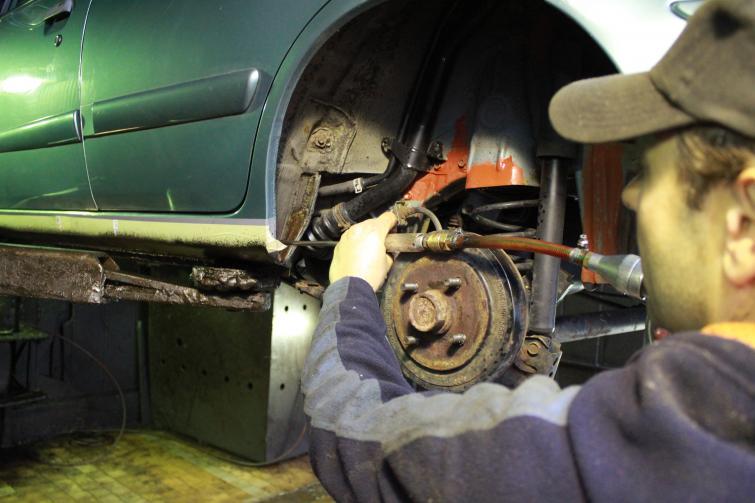
Anti-corrosion protection. Take care of them before they rust.
Content
 Factory anti-corrosion protection - although getting better and better - does not eliminate the risk of corrosion. That's why it's worth investing in maintaining or improving your anti-corrosion coating. Many drivers remember the problem of rust in the fall or winter, but the best time to protect the chassis is in the summer - dry and free of road salt.
Factory anti-corrosion protection - although getting better and better - does not eliminate the risk of corrosion. That's why it's worth investing in maintaining or improving your anti-corrosion coating. Many drivers remember the problem of rust in the fall or winter, but the best time to protect the chassis is in the summer - dry and free of road salt.
At the moment, almost every new car is covered by a warranty for perforation of the body and chassis. Some manufacturers, such as Ford, provide it for up to 12 years. The condition for its maintenance is usually regular checks of the paintwork on the ASO. They should be done at Ford once a year. Instead, in the event of a rust outbreak, the service repaints the corroding element under warranty. Unfortunately, in many cases the terms of the warranty are unfavorable for the driver. At Volkswagen, it lasts as long as 12 years, but only in theory. The paintwork is covered by a three-year protection, and after this time, corrosion that is not caused by mechanical damage is often eliminated by the car owner at his own expense. Meanwhile, the factory anti-corrosion treatment does not last that long. We have a full 12 years of protection only against rust of elements from the inside, which is very rare.
Several ways to protect the chassis and body from corrosion
Therefore, despite the long warranty period and the widespread galvanizing of bodies, experts recommend comprehensive vehicle maintenance every 3-4 years. Moreover, corrosion rashes appear more and more often even on expensive cars of famous brands after several years of operation. Corrosion protection, as you can see, does not work very well. In the automotive market, the most popular body care method is still the coating of profile sheets with a special composition.
– We use Fluidol for corrosion protection. It is a wax-based liquid agent that, after drying, forms a protective coating on the profiles. Depending on the vehicle, it is inserted through the technological holes or after removing the upholstery. This is best done with a gun with a special rotating nozzle. Thanks to this, the preparation will penetrate into all nooks and crannies,” explains Stanisław Płonka, a car mechanic from Rzeszów, who also performs anti-corrosion protection.
See also: Top 10 ways to reduce fuel consumption
This type of procedure can even be performed independently, without fear of damaging the elements located, for example, inside the door. Most of them are tightly covered with special foil at the factory. The chassis requires slightly different care. We always begin its corrosion protection with a thorough washing and drying. Then you need to get rid of rust stains. We clean them with sandpaper, and then protect the place with an anti-corrosion primer. Only after it has dried can a protective substance be applied to the bottom.
There are many automotive anti-corrosion products on the market. The principle of their operation, however, is very similar - they create a coating from which, for example, small pebbles bounce. It is also best to cover the chassis with a cannon. This will create a smooth anti-corrosion coating. In most cases, both the floor and the beams, rocker arms and thresholds are preserved. The preparation does not cover only the exhaust, which is very hot. The anti-corrosion coating will not last long and will stink.
Blocks oxygen, displaces water.
There are also car services on the market that use more sophisticated foreign technologies. One method of corrosion protection is Canadian Poszeck Rust. “This method was developed in northern Canada, where winters are particularly harsh and cars require more maintenance than in Poland,” explains Mieczysław Polak, owner of a car repair plant in Rzeszów. Comprehensive anti-corrosion protection of a car by this method is also divided into two stages. The first is to inject the agent into private profiles. Unlike traditional methods, Rust Check is a penetrating substance that, when applied, penetrates into cracks and microcracks and displaces water from them.
– We inject such agent into the profiles under pressure. Its most important task is to block the access of oxygen to the sheets. Air promotes corrosion. Since not all parts of the car body are varnished by XNUMX%, and many of them are erased over time, oxygen can be blocked with a layer of preservative, the Pole explains. Corrosion protection according to the Rust Poschek method does not require disassembly of the upholstery. The preservative is inserted into holes in the body, which are then also used to fill it.
It must be flexible
Instead of traditional anti-corrosion materials to protect the chassis from corrosion, Canadians recommend preparations from the American company Valvoline. Mieczysław Polak makes sure that, unlike domestic preparations, they adhere better to the chassis and form a more flexible coating. The effectiveness of anti-corrosion protection is estimated at about three years. After this time, it is necessary to inspect the anti-corrosion coating and, if necessary, make up for possible losses.
Minimum PLN 500
Maintenance using the Rust Check method costs about PLN 750 for a small car (eg Volkswagen Polo, Opel Corsa). You need to prepare PLN 1000 to secure the family station wagon. In the case of larger vehicles, such as buses, maintenance costs using the rust test method start at around PLN 1350. Maintenance of a passenger car by the traditional method (anti-corrosion) costs about PLN 500-700.
See also: Testing the Porsche 718 Cayman
